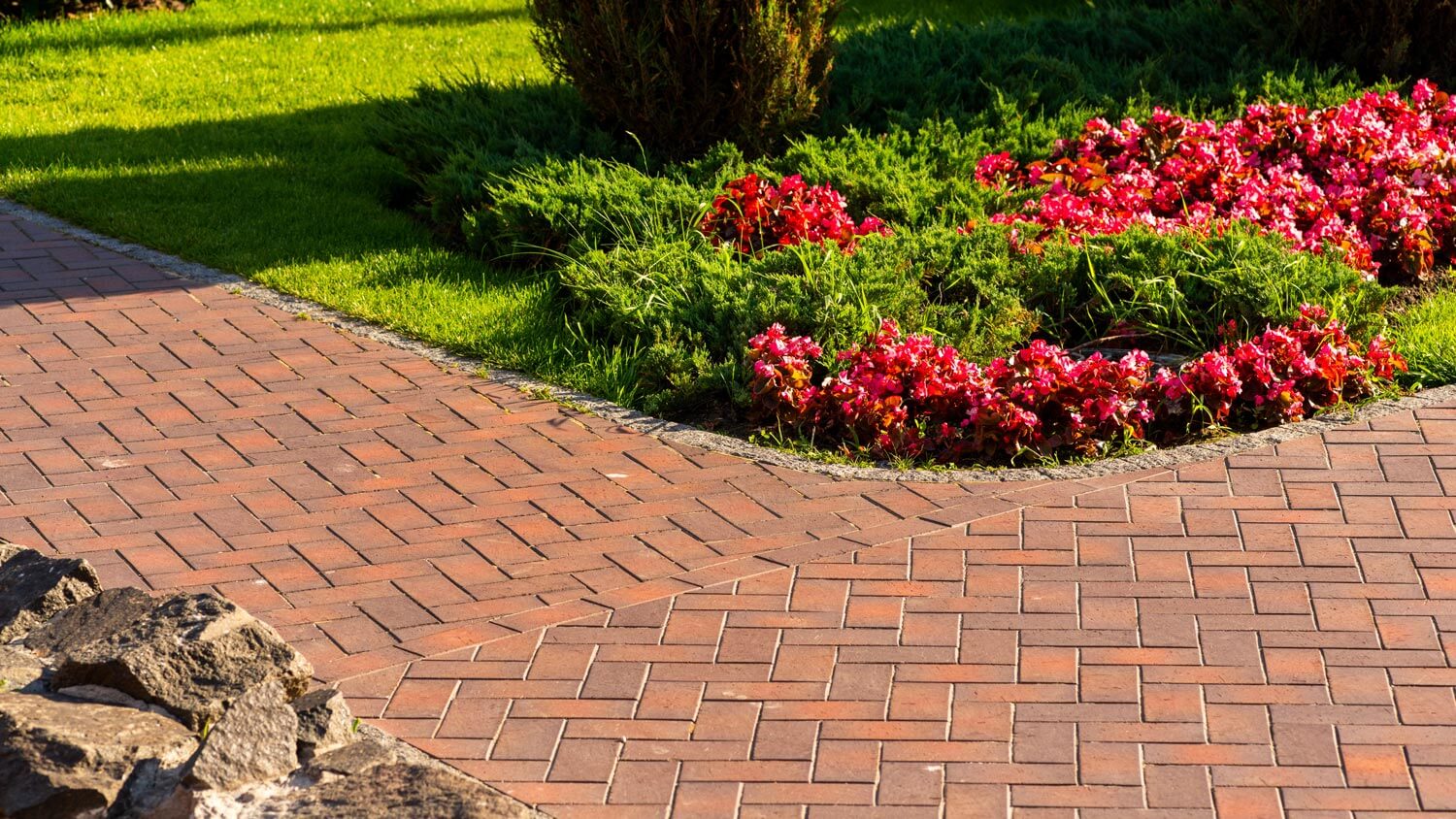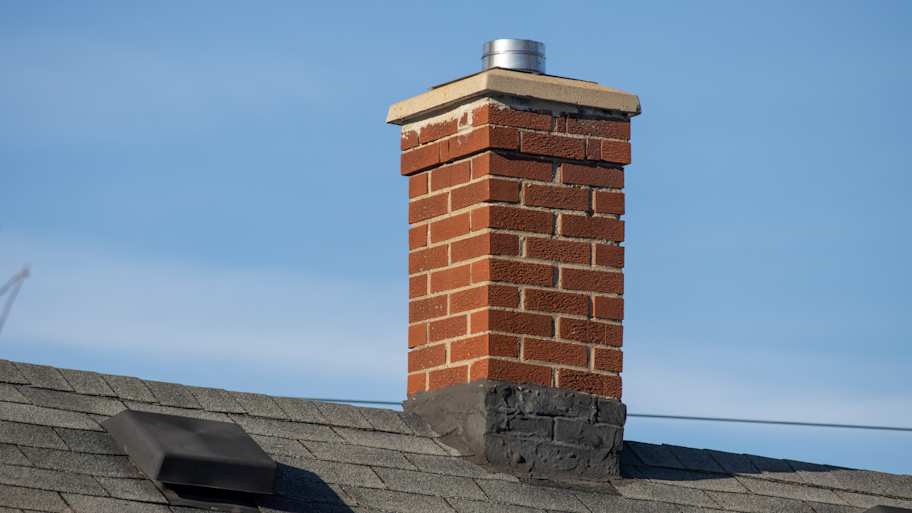
The cost to brick a house depends on several factors, like labor costs, home size, and brick types. Use our guide to estimate your bricking costs.
Is it time to repoint that brick wall?


Cracks, gaps, and holes in the mortar are all signs your brick needs repointing.
Repointing should only be done when the temperature is between 40 and 90 degrees.
Brick repointing costs $5,000 to $25,000 on average.
Tuckpointing costs $5 to $25 per square foot.
Brick provides a timeless aesthetic that is still much loved by today’s society. With the proper maintenance, brick structures can also last for hundreds of years, making your home a unique historic piece that can be passed down through generations. When it comes to maintaining your brick home, one of the most crucial steps is repointing. Though labor intensive, brick repointing is integral to a brick structure’s safety and longevity.
Repointing refers to the process of repairing the joints between bricks, stones, or blocks by removing old, crumbling mortar and replacing it with fresh mortar. Typically, brick masons do this by carefully grinding or chiseling out the damaged mortar to a specific depth without harming the surrounding bricks. They then fill those joints with new mortar that closely matches the color and composition of the original material.
While brick is one of the sturdiest construction materials available and can last for centuries, it does deteriorate as time goes by because the mortar used to hold the bricks together isn’t nearly as durable as the bricks themselves. As a result, the biggest reason why you need to repoint bricks is to restore their structural integrity and allow masonry to properly bear weight. Repairing bricks early with repointing can prevent expensive repair or replacement later on.
Repointing can also improve your curb appearance. It will patch up any uneven spots on your mortar and give your brick a cleaner, newer look. If you’re considering selling in the near future, having your bricks repointed can increase your property’s value. Repointing can also help prevent water damage by keeping moisture out.
There are five easy-to-identify signs that it’s time to repoint your bricks. These are:
Damaged bricks: damaged bricks call for a repointing as soon as possible to prevent the damage from expanding.
Damp or moisture: Water damage can compromise your bricks and repointing can help keep moisture out. If you begin to notice damp spots on the bricks, it’s time for a repointing!
Inappropriate mortar: Was the original pointing done poorly? Maybe the contractor used modern cement instead of lime mortar.
Salt deposit: Also known as efflorescence, salt deposits onto your brick over time from water. The dissolved salt sticks to or rises to the surface and forms a dusty white layer. It’s not harmful to the structure, but not the prettiest to look at.
Wash damage: Nothing wrong with washing your bricks from time to time, but power washing can damage the mortar and the bricks.

The principle of brick repointing is fairly simple: remove old mortar, apply new mortar, and voila! Your brick wall is repointed. Repointing can be done with common hand tools, making it a fairly easy DIY project as long as you can handle the intensive labor.
Begin by examining the brick structure. Where are the damages? How bad is it? Also, look at the original mortar and the structure as a whole. If you think the damage and water seepage are caused by a larger issue unrelated to mortar deterioration, you may want to find a foundation or masonry pro to take a look before repointing.
The new mortar used for repointing should be close to the original in terms of strength, permeability, and thermal expansion abilities. The mortar should also be around the same level of strength as the actual masonry units, in this case, your bricks. Otherwise, your mortar would put more stress on the bricks instead of relieving it. Once you’ve chosen your material, test it on a small section of the brick to make sure it works.
Lay a drop cloth on the ground in front of the bricks. Measure the vertical joints to determine the mortar depth. Be aware that the type of brickwork you have also affects how deep you can go. Once you know your numbers, rake the mortar out of the vertical and horizontal joints. Use a masonry brush to make sure the joints are clean.
Grab a spray bottle and mist the wall with water for some extra moisture. This is not a mandatory step in repointing, but a useful trick to prevent the mortar from drying up too quickly.
Fill the joints with mortar. After filling the joints, let the mortar rest for 30 to 40 minutes. Then, start repointing vertical joints, followed by horizontal ones, with a pointing trowel. Be sure to scrape off any excess mortar to finish up.
Repointing brick costs around $1,450, on average, but it can range from $400 to $2,500 depending on the project’s complexity. Smaller touch-ups on a garden wall or walkway usually fall on the lower end, while repointing a full home exterior, chimney, or foundation can push the price much higher.
Your final price will also depend on the area’s size, the condition of the existing mortar, the height and accessibility of the wall, and whether you’re dealing with decorative or load-bearing brickwork. You’ll also pay more if the mason needs to color-match the mortar or use historical restoration techniques.
Tuckpointing is about filling in mortar joints of brickwork using two different shades of mortar, whereas repointing refills the removed mortar with the same material used before. Technically speaking, tuckpointing is not a repair method and may use a shallower depth compared to repointing.
For tuckpointing, remove some of the old mortar and use mortar identical to the brick's color, then fill the lines with a different color to emphasize the fine, thin line between bricks. This mimics a high-end look without forcing you to get new bricks altogether. It is more of a cosmetic strategy than a physical fix-up. On the other hand, repointing cares less about aesthetics but more about structural integrity.
Brick repointing is not technically demanding, but it is extremely labor-intensive. Repointing bricks using only common hand tools can take at least 3 to 4 hours. For someone without previous repointing experience, it can also be tricky to measure the depth. All factors considered, it might be in your best interest to hire a masonry contractor to take care of your repointing needs.
On average, brick repointing can cost from $5,000 to $25,000 depending on the scope and the kind of brickwork you have. Tuckpointing costs $5 to $25 per square foot, and sometimes your contractor may recommend tuckpointing because of the high-end look it creates. When working with a masonry pro, experience and reputation is key. Always check their reviews first and shop around to get multiple quotes from different contractors. This will ensure you get the most out of your budget without compromising work quality.
From average costs to expert advice, get all the answers you need to get your job done.

The cost to brick a house depends on several factors, like labor costs, home size, and brick types. Use our guide to estimate your bricking costs.

Discover the average stone restoration cost, including price ranges and key factors, to help you plan your next home project with confidence.

Door or window lintel replacement costs $400 on average, but there are ways you can save. On the other hand, complicated work will increase costs considerably.

Discover the true brick walkway cost for your home. Discover installation prices, key cost factors, and expert tips to save on your brick walkway project.

Picking the right mortar matters in masonry projects. Learn when to use Type N versus Type S and what makes each mix ideal for different masonry applications.

Keystone is a structural concept that dates back thousands of years. But what is a keystone in masonry, and how is it used today?